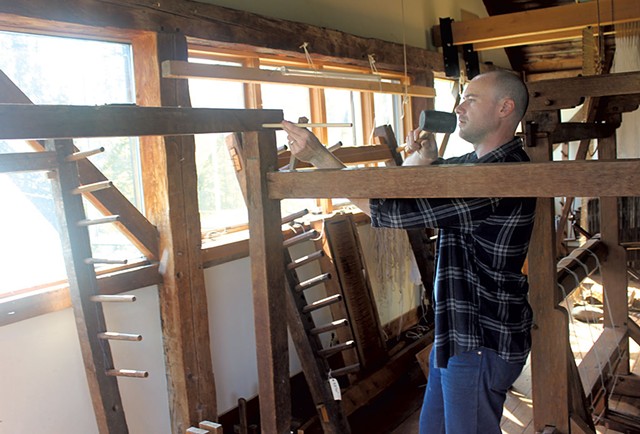
- Mary Ann Lickteig ©️ Seven Days
- Justin Squizzero dismantling a loom
Moving day for Marshfield School of Weaving arrived with the attendant stressors typical of a do-it-yourself relocation: anxieties about packing up or unloading in the rain, sadness about leaving a longtime home and pressure to work efficiently to maximize volunteer helpers' time. Three were due at a cider pressing party at 2 p.m., and a fourth had a Jersey cow expected to calve that day. (She had twin heifers.)
This effort featured the added challenge of dismantling, loading and hauling 10 massive antique looms. School director Justin Squizzero admitted he had no idea how long it would take.
The school had lost the lease on the barn, on Eaton Cemetery Road in Marshfield, where it had operated since 1975 — with the exception of 15 years when it was closed. It was moving an hour away to the Old Village Church on the Newbury Village Common.
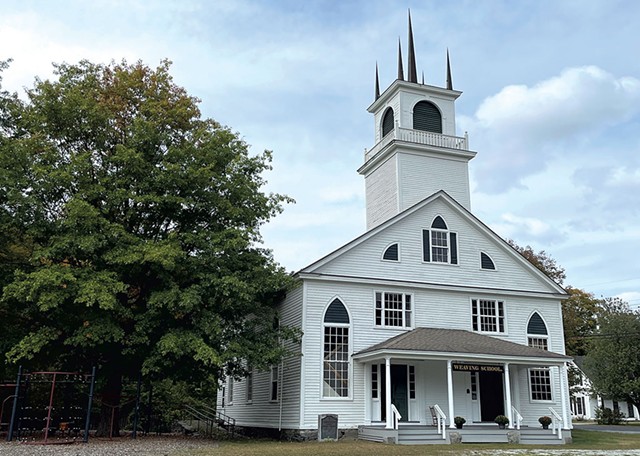
- Courtesy Of Marshfield School Of Weaving
- The Old Village Church in Newbury, which now houses the Marshfield School of Weaving
Just a day earlier, eight students had been weaving at the school, where classes were full this summer. In 2023, Marshfield School of Weaving, which will keep its name, hosted 212 students who came from 32 states as well as Australia, New Zealand, Scotland and Canada.
"There really isn't any other school that teaches what we teach — certainly not in the U.S.," Squizzero said.
Squizzero teaches "a form of time travel," said Emari Traffie, a student in his final class at the old building. Most of the school's looms, which are roughly six by six feet, were built in the late 18th and early 19th centuries, with the oldest probably dating back to 1771. Some were given to the school by the American Textile History Museum in Lowell, Mass., after it closed in 2016.
They are antiques, but not the kind that sit inside climate-controlled display cases. These are working looms, subject to the oils on people's hands and the stifling humidity of a Vermont summer. And on this thankfully dry September Saturday, they would be moved the way they'd likely been moved earlier in their lifespans: by friends and neighbors who showed up with trailers, muscle and good cheer.
Fog swallowed the school at 9 a.m. as Jeff Goodell and his 6-year-old Lab, Poppy, arrived in a Chevy Silverado pulling a horse trailer. He and Squizzero are neighbors in Newbury. Sue Carpenter, who's known Squizzero since performing with him in Unadilla Theatre's H.M.S. Pinafore 10 years ago, pulled in along with her partner, Jim Colgan, each in a pickup truck towing a trailer. Squizzero's husband, Andrew Haggan, directed traffic.
Next to the barn, mushrooms simmered in pans on a portable stove as faculty member Joann Darling ran a workshop on natural dyes for two sisters-in-law, one from Pennsylvania, the other, New Jersey.
Inside, on the second floor where the looms stood under the hand-hewn beams of the 215-year-old barn, Sara Moulton boxed up lights. Joanne O'Meara gathered the shearlings that pad the loom seats, stacked them in a box and taped it up, then darted around collecting loose fabric items. "I have to keep moving," she said.
Packing yarn, bookshelves, file cabinets and other small furniture items required no particular expertise. Most of the volunteers were not weavers. One of them, John Marsh, had never even been to the school before.
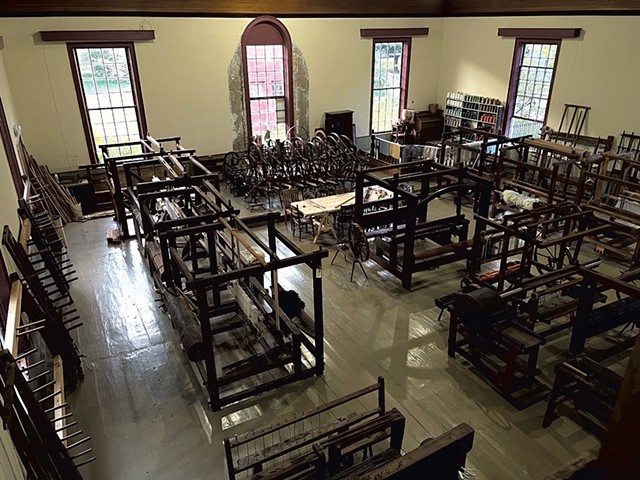
- Courtesy Of Marshfield School Of Weaving
- The new space, ready for classes
Haggan, a mail carrier, has woven just two pieces of cloth, but he appeared to be the day's director of operations, eager to make progress. Employing the skills of both a border collie and a schoolteacher, he moved quickly and purposefully, kindly discouraging idle chatter and directing hands to meaningful tasks. "All of the loomy bits that ended up here can go into Jim's trailer," he said, standing near the base of the stairs.
I began sneaking in questions to the other workers when Haggan was out of earshot, but he spotted Carpenter talking to me just inside the front door. "I am terribly sorry to interrupt," he said to Carpenter. "You are the only person who doesn't have a current job. Please come with me."
Carpenter followed him up the stairs, and I followed Carpenter. Squizzero, rubber mallet in one hand and dowel rod in the other, was about to take apart a loom. Haggan and Carpenter would hold up the sides.
Squizzero put one end of a dowel rod on the head of a wooden pin and tapped the other end to pop out the pin. He wriggled apart the mortise and tenon joinery. Partway through the task, he stopped working to answer a question — from Carpenter, not me.
"I'm sorry," Haggan interjected. "Taking apart the looms is very, very important."
Carpenter suggested that Squizzero could talk and work at the same time.
"He couldn't!" Haggan said. "Did you see what just happened?"
The looms came apart fast — no power tools needed — and volunteers carried the pieces down six steep steps, around a 90-degree turn, down seven more steps and out the front door. By 11:30 a.m. six looms were dismantled. The fog had dissipated, and the first two truckloads departed.
Most American handweaving and weaving education come out of the early 20th-century arts and crafts revival movement. But the Marshfield school teaches older traditional methods, using different, more efficient, equipment, Squizzero said.
Contemporary looms, created for hobbyists, sacrifice the ergonomic advantages of looms built for people who worked on them for a living. That's one reason the old looms are so big. "It's because they're built so that the weaver can fit inside of the tool, as opposed to having to conform their body to kind of wrap around the tool," Squizzero said. Weavers use the techniques they learn at the school in their professional work, to demonstrate weaving at historic sites or simply for personal enrichment.
School founder Norman Kennedy began learning traditional weaving as a child in Scotland in the 1930s, when the clattering of old handlooms behind an Aberdeen tenement piqued his curiosity. He traveled through the Outer Hebrides absorbing the textile tradition that stretched back centuries. He also learned Gaelic and traditional folk songs. In 1967, he performed at the Newport Folk Festival, as did Pete Seeger, Joan Baez, Arlo Guthrie and Maybelle Carter.
Kennedy, now 91, continued to appear at festivals, singing and weaving. When he saw Vermont's mountains, he recalled, a tear rolled down his cheek. "Home," he said.
With backing from Virginia Stranahan, the granddaughter of Champion Spark Plug cofounder Frank Stranahan, Kennedy opened the school on a farm next to hers. The barn was leaning, and Stranahan had considered razing it, Squizzero said, but it was renovated instead. He first saw it in 2007, when he was 19 and arrived to study with Kennedy and Kennedy's apprentice, Kate Smith, who had that year reopened the school after its hiatus.
Smith operated the school as a for-profit enterprise and served as proprietor and director. She retired in 2023, the year it became a nonprofit, and Squizzero became director in January 2024.
In March, board president John Schratwieser got an email from the Ohio banker representing the trust that owns the school's building. "The family" had decided not to renew the lease. The message offered no explanation and did not name the family. Squizzero said Virginia Stranahan's family owns the building; her two children could not be reached for comment.
"As far as we're concerned, the why is really no longer relevant," Schratwieser said, "because we have been so welcomed by the town of Newbury." The new site allows the looms to be on the first floor, accessible to people who can't climb stairs. Schratwieser praised the support from the "alumni of the school and people who know the work that we do and are making these donations to make it possible for us to really, not just continue, but to kind of thrive for the first time in a while."
The new building is next to Newbury Elementary School. Marshfield School of Weaving directors plan to offer workshops for children and community engagement projects, "things that just never would have been possible under a sole proprietorship," Schratwieser said. "So, for the future of the organization, it's really the best thing that could have happened."
Squizzero, a Rhode Island native, has a personal connection to the new building. When he was 8 or 9 years old, he built it out of paper. He had Dover Publications' "Cut and Assemble an Early New England Village" kit. Its meeting house was a replica of the Old Village Church.
Relocating the weaving school is bittersweet, Squizzero said, but the school exists to preserve a craft. "It's not about a place," he said. "It's all in people's hands, and that is incredibly mobile. We carry it with us any place we practice these skills."






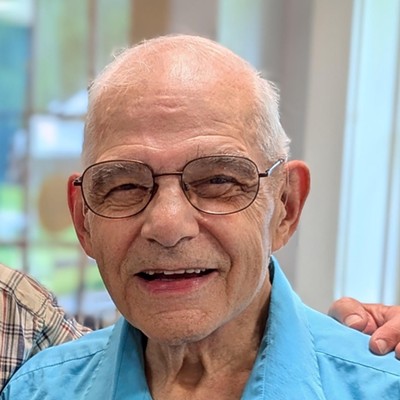
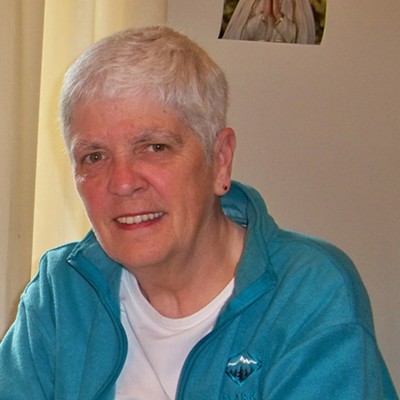

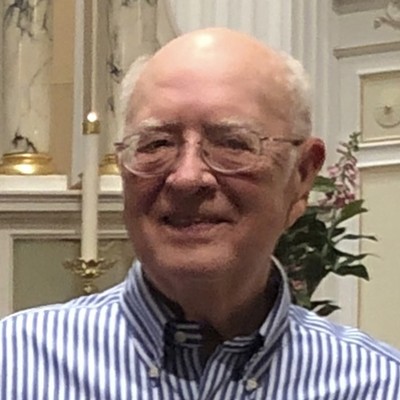
Comments
Comments are closed.
From 2014-2020, Seven Days allowed readers to comment on all stories posted on our website. While we've appreciated the suggestions and insights, right now Seven Days is prioritizing our core mission — producing high-quality, responsible local journalism — over moderating online debates between readers.
To criticize, correct or praise our reporting, please send us a letter to the editor or send us a tip. We’ll check it out and report the results.
Online comments may return when we have better tech tools for managing them. Thanks for reading.